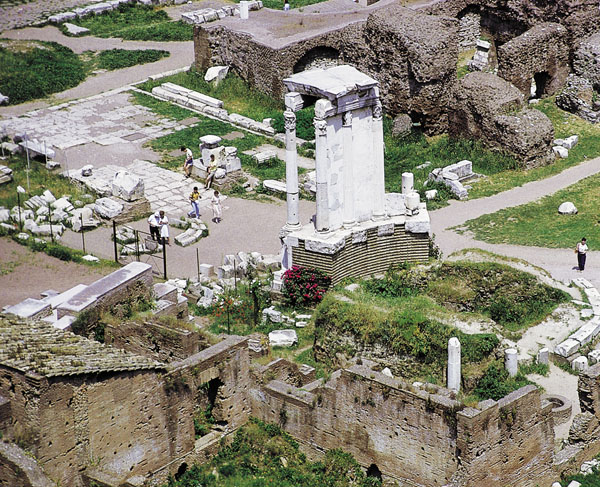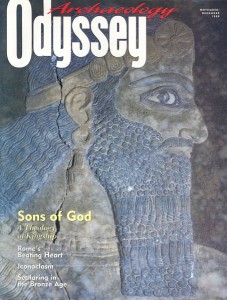The Vestal Virgins
Sidebar to: A Great Empire’s Beating Heart

At the center of the otherwise masculine world of the Roman Forum sits a graceful ancient building that was once exclusively governed by women: the Temple of Vesta.
The hearth goddess Vesta is one of the oldest deities in the Roman pantheon, and her temple (c. 575–550 B.C.) is the Forum’s oldest structure. Here the goddess’s servants, the Vestal Virgins, tended the eternal flame—which tradition holds was brought from Troy.
Relatively little is known about the Vestals. Ancient sources tell us that they were required to live apart from the world of men, after vowing to remain chaste for 30 years. A Vestal who broke her vow was buried alive. Once a year the Vestals made a sacred procession to a stream just outside the walls of Rome at the beginning of the Appian Way. Any man caught spying on them risked death for his presumption.
Most of the time, the Vestals remained safely ensconced in their building complex at the Forum. The principal building in this complex was the circular Temple of Vesta (shown here), where the Vestals guarded the sacred fire. Near the temple sat a large rectangular building with an open atrium, known as the House of the Vestals (Atrium Vestae). This structure probably served as a reception hall and administrative building. Because of the Vestals’ legendary trustworthiness, Rome’s citizens deposited wills and other important documents with them for safekeeping. In another building, probably the Vestal residence, archaeologists have identified a kitchen on the second story.
Already a library member? Log in here.
Institution user? Log in with your IP address.

